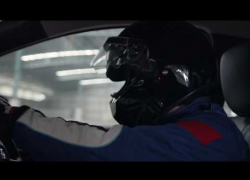Just before Christmas, after receiving complaints from the riding public, the LTFRB called in Uber and Grab and demanded to know why they have been taking advantage of the Christmas rush and slapping passengers with unreasonable surge pricing––one reportedly as high as 28,000 pesos.
Both companies have already responded, agreeing to put a cap on the surges, but there still seems to be some confusion surrounding dynamic pricing and whether or not it should be allowed or at least regulated. To many, it is just a high-tech way of doing what those unscrupulous cab drivers have been doing for years––which ironically enough, is why Filipinos embraced the ride-sharing option to begin with.
So why would Uber and Grab do it?
Well the simple answer is that low fares leads to low reliability, as drivers decide to just wait out the traffic––or in the cases of holidays––spend it with their families instead. Think about it. If you weren’t offered more money to work on Christmas day, how many of you would actually put your hand up? As a a regular employee in this country, you’re covered by a law that entitles you to receive 30% up to 100% extra pay when you work on holidays. If you are an Uber or Grab driver, however, you are not entitled to those benefits. So dynamic pricing becomes the only thing to offset that.
It stinks, I know. But try to think about it like booking a flight or a hotel. There are peak times and off peak times. If we want to go to Boracay during Holy Week, we accept that we will pay the cost of a healthy kidney to be able to guarantee a selfie on the beach. Or we can fly Cebu Pacific and take our chances.
Same goes with TNCs. Both companies promote reliable service over anything else. And in order to do that, they need to incentivize it. When they put a surge, they are basically encouraging more drivers to go out to service the swell of riders. Because in their mind it is better to have dynamic fares where 9 out of ten will have a ride, than low fares where only 1 or 2 will get lucky.
In a perfect world, this wouldn’t happen of course. But then again, neither would Kim Kardishian and Donald Trump. But I digress. Moving on, while I do applaud the LTFRB chairman for getting Grab and Uber to agree to a cap (even if neither would be specific about what that would be exactly) I humbly caution them to be careful not to regulate TNCs into the same broken model that got us into this mess to begin with.
Uber and Grab work precisely because they are NOT treated or regulated like cabs. Yes we need some kind of framework for them to operate, but requiring them to subject themselves to the LTFRB regulations would be like having the post office regulate email and the KBP regulate social media accounts.
Bottom line is, we need to be realistic. Because while I personally hate seeing that surge on the app, I would take that over being stranded somewhere negotiating with arrogant cabbies on the side of the road. At least with the app, you can sit down, relax, grab a cup of coffee and ask it to notify you when the surge ends instead of acting like you’re in some kind of a low budget reality show where you need to bid out your dignity for a chance to be deemed worthy enough to be allowed into a smelly cab.
But as much as I condemn the act, it’s hard to condemn the cabbie. How else do we expect them to be reasonable while we impose such an unreasonable set of regulations on them. Traffic is one of the most dynamic things to deal with, yet we impose static pricing based on a severely outdated model. It is penny wise and pound foolish. It would be as ridiculous as offering a base salary of P14,834 to a policeman and then condemn them when they take money from a syndicate to turn a blind eye; or expect our senators and congressmen to remain honest while they recoup a hundred million pesos of campaign costs on a salary of 97, 163 per month; or ask a grown man to take a vow of celibacy. I could go on, but I think you get the picture.
So, now that both TNCs have agreed to put a cap on surge pricing (presumably around the 2-2.5X mark or so) I leave you with this question. What would you rather have? Dynamic pricing with a guarantee? Or fixed pricing without one?
Hit the comments box below.
PS: That 28,000 peso estimated fare? The rider accidentally keyed in Mindanao region instead of Mindanao Avenue, Q.C.



